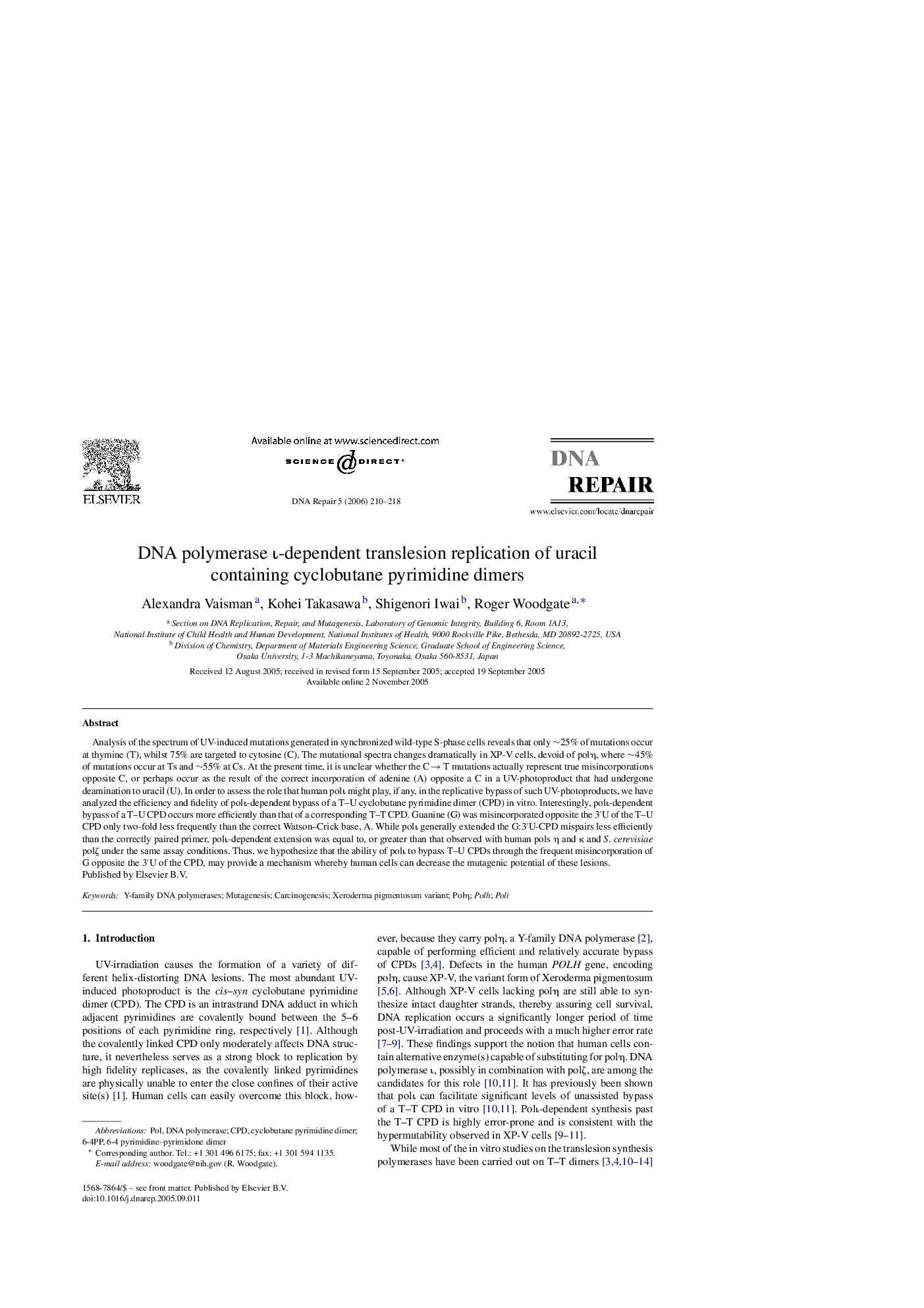| کد مقاله | کد نشریه | سال انتشار | مقاله انگلیسی | نسخه تمام متن |
|---|---|---|---|---|
| 1981517 | 1061950 | 2006 | 9 صفحه PDF | دانلود رایگان |

Analysis of the spectrum of UV-induced mutations generated in synchronized wild-type S-phase cells reveals that only ∼25% of mutations occur at thymine (T), whilst 75% are targeted to cytosine (C). The mutational spectra changes dramatically in XP-V cells, devoid of polη, where ∼45% of mutations occur at Ts and ∼55% at Cs. At the present time, it is unclear whether the C → T mutations actually represent true misincorporations opposite C, or perhaps occur as the result of the correct incorporation of adenine (A) opposite a C in a UV-photoproduct that had undergone deamination to uracil (U). In order to assess the role that human polι might play, if any, in the replicative bypass of such UV-photoproducts, we have analyzed the efficiency and fidelity of polι-dependent bypass of a T–U cyclobutane pyrimidine dimer (CPD) in vitro. Interestingly, polι-dependent bypass of a T–U CPD occurs more efficiently than that of a corresponding T–T CPD. Guanine (G) was misincorporated opposite the 3′U of the T–U CPD only two-fold less frequently than the correct Watson–Crick base, A. While polι generally extended the G:3′U-CPD mispairs less efficiently than the correctly paired primer, polι-dependent extension was equal to, or greater than that observed with human pols η and κ and S. cerevisiae polζ under the same assay conditions. Thus, we hypothesize that the ability of polι to bypass T–U CPDs through the frequent misincorporation of G opposite the 3′U of the CPD, may provide a mechanism whereby human cells can decrease the mutagenic potential of these lesions.
Journal: DNA Repair - Volume 5, Issue 2, 3 February 2006, Pages 210–218